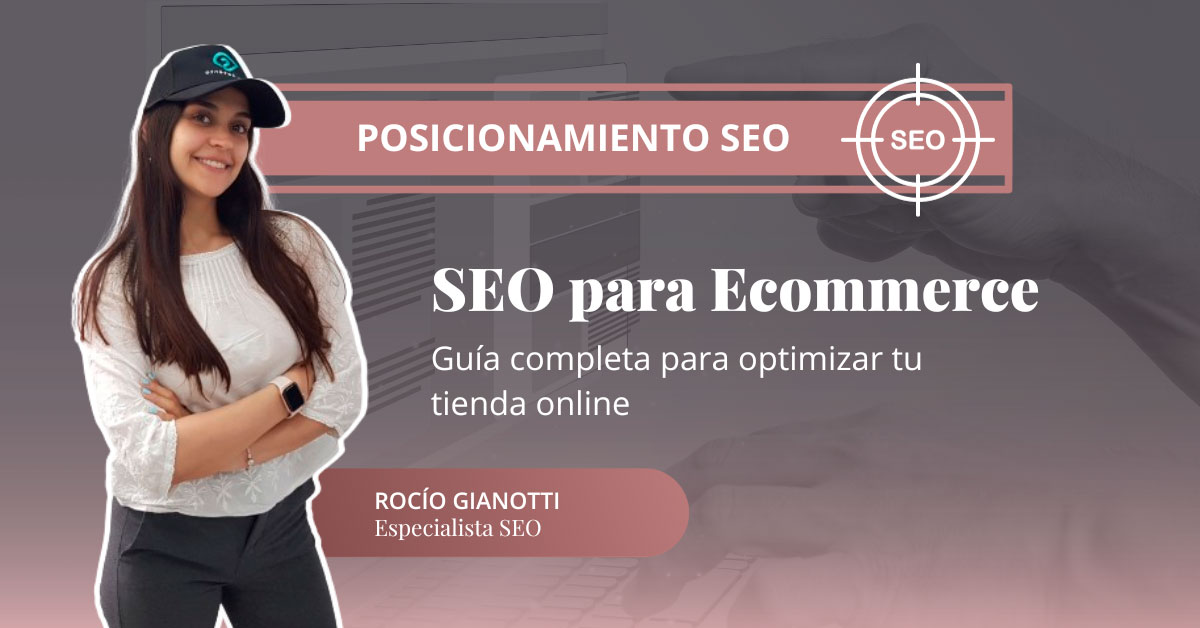Everyone who manages online businesses knows the importance of reaching the coveted first spot on Google search. In this regard, understanding SEO for E-commerce becomes essential to increase the visibility of your products or services.
However, SEO is not an easy task. Many resort to paid strategies, advertising campaigns, and other investments to gain ground in Google’s search results pages.
But what if we told you that you can increase your visibility and attract more customers effectively? This is possible through SEO strategies specially designed to boost your e-commerce. Learn more below with the complete SEO for E-commerce guide.
SEO for E-commerce Guide
In this guide, we will provide you with a detailed overview of everything you need to know. You will learn the most effective strategies and key techniques to optimize your online store and bring it to the top positions in search engines.
Interested? Let’s get started!
Choosing the Right CMS
CMS, or Content Management System, is essential for any website. Before launching your online store, it’s crucial to select the best CMS that fits your business needs. When making this decision, you should consider certain SEO criteria:
Ease of Editing Crawl Files: Ensure that the CMS allows you to easily edit crawl files to optimize your site’s indexing.
Ability to Modify Meta Tags: You should be able to adjust the meta tags of your pages to improve their visibility in search engines.
Availability of Extensions and Plugins to Optimize Page Load Speed: Page load speed is a crucial factor in SEO. Ensure that the CMS offers extensions and plugins to optimize this area.
Extensions and Plugins to Improve Content and SEO-Relevant Tags: Look for options that allow you to optimize your content and important SEO tags.
Choosing the right CMS is an essential step to improve your e-commerce SEO and increase its online visibility.
CMS Comparison
When selecting the right CMS for your online store, it’s essential to know the strengths and weaknesses of each option. Here is a comparison of the most popular CMS:
Shopify

Shopify is an excellent choice for projects with limited resources in their early stages and those not planning to do advanced SEO optimization. It is ideal for start-up businesses whose main traffic sources will be paid campaigns and social media.
- Ideal for start-ups with limited resources.
- Suitable for businesses with basic SEO optimization needs.
- Limited in controlling the generation of crawl files (sitemap and robots.txt).
- Allows basic meta tag editing and automatically adds canonical tags.
WooCommerce

WooCommerce, on the other hand, is a CMS optimized for small stores that want to integrate a blog into their platform. It is an ideal option for:
- Small and medium-sized e-commerce.
- Stores that want to host a blog within their environment.
- Requires keeping WordPress updated to ensure security.
- The WordPress community is extensive and offers a wide variety of plugins. For example, Yoast WooCommerce SEO, a version adapted for e-commerce from the popular SEO plugin Yoast for WordPress.
Prestashop and Magento


Prestashop and Magento are CMS designed for medium and large stores with high volumes of stock and orders, as well as needs for ERP integration, among others. Both have numerous alternatives (plugins, modules, etc.) to optimize SEO.
- Ideal for medium and large online stores.
- Excellent for managing large volumes of stock and orders.
- Require investment and have a steeper learning curve compared to the previous options.
- They have an active community of developers who provide constant updates.
With this comparison, you can make an informed decision about which CMS best suits your online store’s needs.
E-commerce SEO: Steps to Optimize Your Site
To achieve effective SEO optimization for your online store, there are several key aspects to consider:
Keyword Research
First and foremost, it is essential to understand your potential customers and how they search for products like yours. What words do they use when searching on Google for products similar to yours? Identifying these “business keywords” is crucial.
Imagine someone is looking for a high-quality television. Do you think they’ll type “high-quality televisions” or simply “high-quality TV”? Or if they are interested in traveling to a paradisiacal beach, will they search for “beach holidays” or simply “paradisiacal beach”?
The choice of specific keywords is essential. For example, “televisions” is a more common keyword in searches, so a store selling high-quality televisions will prefer to appear in results related to “high-quality televisions.”
To start or improve an online store, it’s valuable to identify the keywords you want your products to rank for in search engines. Associate a primary keyword to each page of your e-commerce, whether for product categories or individual products.
The structure of an e-commerce site is similar to an inverted pyramid, and its optimization for SEO is essential. For example, let’s take Zalando, one of the leading e-commerce platforms, which demonstrates this structure in its approach.
Categories and Subcategories:
When creating your product catalog structure, ensure consistency and consider optimizing keywords. Use keywords to name your categories and subcategories. Make sure your users understand and use the same terms.
Use a hierarchical structure in the shape of a pyramid, starting from the main page and moving towards categories (main keywords) and subcategories (secondary and specific keywords). This will effectively distribute the “link juice” to all URLs.
Control how the URL of your products is generated by using the last applicable category and the product name. Try to keep the URL depth to no more than 2 levels of products.
On-Page SEO for E-commerce
On-Page SEO involves optimizing elements within your pages to improve visibility in search engines.
Meta Title: The page title should naturally and attractively include the primary keyword. For example, for an electronics store, it could be “Latest Generation Smartphones” or “Buy Mobile Phones Online.”
Meta Description: This description should contain relevant keywords. If you’re selling laptops, you might include keywords like “high-performance laptops,” “ultra-light laptops,” and “laptop deals.”
Click Through Rate Optimization: Make your snippets (search results) attractive to increase click-through rates. For example, you could highlight “Fast and secure shipping” in your description to attract users interested in buying electronics.
These are the elements you can optimize on your category and subcategory pages. Make sure the content contains relevant keywords and describes your products. Use canonical tags and manage URLs to avoid issues with filtered pages.
Content on Category Pages
It is important to include content on category pages to improve SEO. For example, Mango, a clothing store, adds relevant content in the footer of the “Women’s Dresses” category page to include important keywords.
Product Pages Optimization
- Product descriptions: Use these descriptions to include keywords related to your products. The more semantic variety you have in your text, the better for SEO.
- Image optimization: Ensure that your images are lightweight and mobile-friendly. Include descriptive “alt” attributes.
- Internal linking: Recommend related products to increase user engagement and improve SEO.
- Structured product data: Implement tags in your page’s code to provide Google with information about your product and increase visibility in search results.
- Product review system: Allow users to leave product reviews to improve credibility and visibility.
- Out-of-stock product management: If a product is out of stock, keep the product page active and offer the option to notify when it is available again. If a product is discontinued, redirect the page to the relevant category.
Friendly URLs:
Use user-friendly URLs that are easy to understand and reflect the page content. They should follow your store’s hierarchy, be short and simple, and include the relevant keyword. For example, “www.yourdomain.com/fiction-books/harry-potter”.
Optimizing your product catalog for SEO requires paying attention to key details in your site’s structure and content. These steps will help improve your online store’s visibility and attract more users.
Linkbuilding to Boost Your E-commerce Authority
Linkbuilding is essential to strengthen your domain authority and improve your e-commerce SEO. A website’s authority is largely based on the number and quality of external links it receives from other websites.
To increase this authority, it is not enough to get numerous links; they must be of high quality, coming from relevant and authorized websites, so this authority transfers to your site. Here are some link-building strategies you might apply:
- Get Links from Specialized Blogs: Look for blogs related to your business niche and work to get links from them.
- Links from Industry Media: Collaborate with relevant media in your industry to get links from them.
- Share on Social Media: Encourage your products and content to be shared on social media, which can generate natural links.
- Collaborate with Influencers: Work with influencers in your niche to share your store and products.
- Collaborate with Stores from Other Sectors: Explore collaboration opportunities with stores from other sectors to exchange links.
- Easy-to-Share Content: Create attractive and shareable content like infographics and ebooks.
- Try to “Steal” Links from Competitors: Use tools like SEMrush or Ahrefs to analyze the lost links of your competitors and consider contacting those sites to replace those links with yours.
- Take Advantage of Broken Links: Use tools to identify broken links on relevant websites and propose replacing them with links to your site.
Technical SEO for E-commerce
Online stores often face technical SEO challenges due to the large number of pages they generate, especially large stores with many products and categories. Here are key actions to consider:
SSL Certificate (HTTPS)
Ensure that your site has an SSL certificate to guarantee security and encrypt user data. Redirect old versions of your URL (HTTP) to the new secure URL (HTTPS).
XML Sitemap
Use an XML file to list the URLs you want Google to index. This map will guide the crawling and indexing of your site. You should submit it to Google Search Console for validation.
Responsive Design
Make sure your website is fully optimized for mobile devices, as Google gives priority to mobile pages in its index.
Avoid Keyword Cannibalization
Avoid having multiple pages on your site competing for the same keywords. Each page should focus on a unique keyword.
Page Speed
Site speed is crucial for user experience and SEO. Optimize image sizes, use quality hosting, and limit the number of plugins and external scripts.
Website Audit
Perform an audit of your online store to identify technical problems, such as misconfigured robots.txt files, errors in meta robot tags, broken external links, and 404 pages.
Avoid Duplicate Content
Avoid having pages on your site with very similar or duplicated content, as this can confuse search engines. Each page should offer unique and valuable content.
Friendly URLs
Use user-friendly URLs that reflect your store’s hierarchy and include relevant keywords. Keep URLs short and simple.
Technical SEO is essential for the performance of your online store in search engines and user experience. Make the necessary corrections to ensure your site is efficient and fully functional.
Blog and Content Marketing
Your online store’s blog can be a powerful tool for e-commerce SEO:
- Answer general questions from your potential customers.
- Provide additional information about your products.
- Keep your customers updated on events and news in your industry.
If your e-commerce sells complex products, especially in sectors like health or finance, a blog can be essential for educating your customers and gaining their trust.



